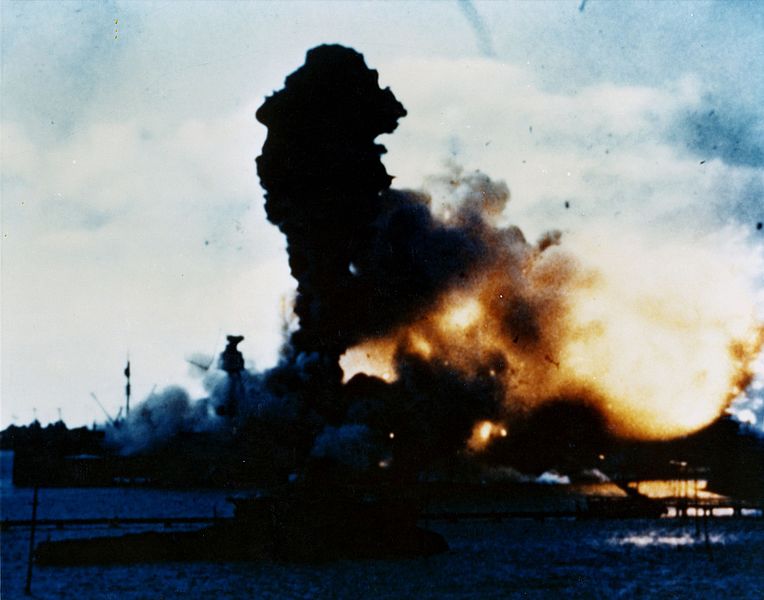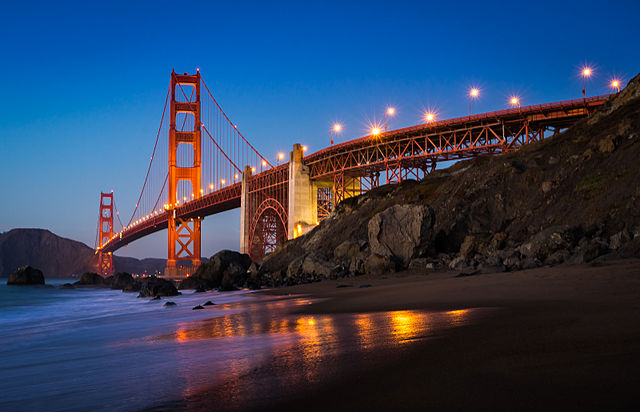Remembering the Attack on Pearl Harbor
and the USS Arizona.
It started out as a quiet Sunday in Paradise, 75 years ago on December 7, 1941.
 |
| The Naval Base at Pearl Harbor as it looked prior to the attack on December 7, 1941. (Photo by US Navy on October 13, 1941, less than 2 months before the attack) |
The Japanese Empire had made several successful conquests on the Eastern half of the Pacific. They viewed the United States as their primary obstacle to dominating the entire Pacific Ocean region. The Japanese fleet, including 6 aircraft carriers loaded with around 450 aircraft, departed Japan on November 26, 1941. Radar from an American Army outpost had detected a large aerial formation shortly before the attack, but it was disregarded as they thought it was incoming flight of friendly planes from the mainland that they were expecting that day.
 |
| The forward weapons magazine on the USS Arizona explode shortly after 8:00 am after being hit. (Official U.S. Navy Photo) |
The first wave of Japanese places attacked at 7:55 am, local time, and caught the U.S. Pacific Fleet stationed at Pearl Harbor completely by surprise. The enemy attack concentrated on “Battleship Row” and the six airfields nearby. Eight U.S. Battleships were put out of commission. 2,335 U.S. soldiers and 68 civilians lost their life in that attack
_burning_after_the_Japanese_attack_on_Pearl_Harbor_-_NARA_195617_-_Edit.jpg/607px-The_USS_Arizona_(BB-39)_burning_after_the_Japanese_attack_on_Pearl_Harbor_-_NARA_195617_-_Edit.jpg) |
| The USS Arizona sinking after being hit. (Source U.S. National Archives and Records Administrationfrom the Franklin D. Roosevelt Library) |
The USS Arizona suffered the worst damage of the entire fleet when its artillery magazine was hit, causing a chain reaction of explosions on the ship. 1,104 servicemen aboard it lost their lives in that attack, accounting for almost half of all the casualties from that day.
 |
| An aerial view of the USS Arizona Memorial straddling the sunken hull of the Battleship that sank in the Attack on Pearl Harbor. (US Navy Photo by Jayme Pastoric Cropped from original) |
The USS Arizona Memorial is one of the most visited National Historical Sites in the United States. The next day, President Franklin Delano Roosevelt addressed Congress and the Nation. "Yesterday, December 7th, 1941 -- a date which will live in infamy -- the United States of America was suddenly and deliberately attacked by naval and air forces of the Empire of Japan."
In these troubling times, let us always remember the resolve and commitment that the generations who have gone before have done to protect our Great Nation and the Freedoms we have.
The USS Arizona Memorial, in Pearl Harbor, Hawaii, is one of the popular attractions featured in the latest edition of Snapshots Across America.
For more information on Pearl Harbor visit:
National Parks Teaching With Historic Places Lesson Plans
For more info on the Dr. Toy Award winning educational board game Snapshots Across America, visit our website at
www.SnapshotsUSAgame.com










































